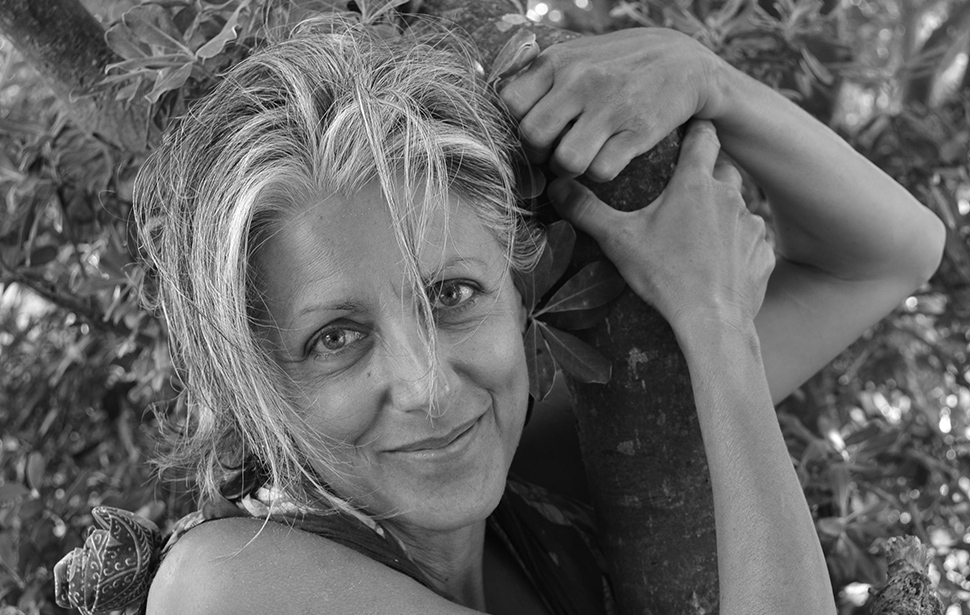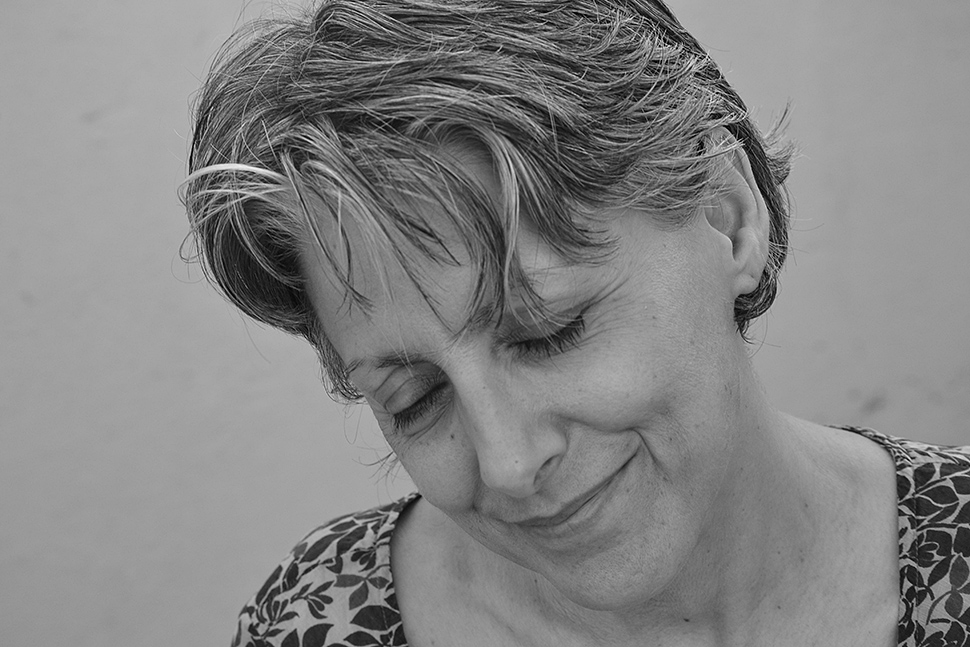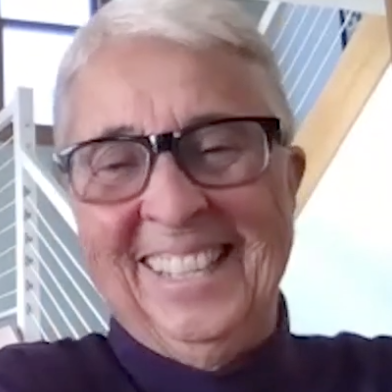Jason Barber is a journalist and human rights advocate. An expanded version of this story first appeared on Medium.com.
Kathleen, my wife, died in my arms at dawn one day last December at home in Massachusetts. As I held her, one of the myriad thoughts which spun in my troubled mind was: “What if someone asks me how she died? Whether she went peacefully?”
I decided to lie. If any family or friends should ask, I would say Kathleen had gone gently, painlessly. Not only was she now at peace, after a tenacious struggle with a torturous cancer, but she had died a “good” death.
She would want me to lie, I thought. The truth would cause more grief to her loved ones; better to tell them what they wanted to hear. And it would encourage them, and myself, not to dwell on her in sickness and death but to remember her in vibrant life.
Nobody asked, and I was grateful for that.
Several weeks later, I developed the uneasy feeling that I’d been wrong. If Kathleen had a singular trait, it was a boundless concern for other people, be they friends or strangers. Of course she would want to minimize family and friends’ distress over her death. But on the other hand, I realized, if the truth about her death could contribute in any way to fewer people suffering like she had in her last days, she would want it told.
The truth is Kathleen did not die well. She died with more pain and discomfort, and more slowly, than necessary. I know she could have died a worse death — many people do — but she should have died a much better one.
I would have, should have, done anything to make her passing easier. I wanted to give her a fatal overdose to end it sooner. I tried to. But I didn’t have enough opiate painkillers or a way to get them into her body fast enough.
Two nights before she died, a visiting hospice nurse gave me a small bottle of liquid morphine for Kathleen’s pain. You must be kidding, I thought. There wouldn’t be enough morphine in the bottle to give what Kathleen so plainly needed — the most compassionate, humane thing that I or anyone could give her — which was to pass into a final peace as speedily and gently as possible. It later became apparent that there wasn’t even enough to adequately soothe her pain, so the nurses kept coming to bring more morphine. Finally, the night before she died, a nurse connected a device to give Kathleen morphine intravenously, telling me that it was regulated so that she couldn’t overdose. You must be kidding, I thought again.

I believe in death with dignity, as did Kathleen. It has different names and definitions—assisted dying, assisted suicide, voluntary euthanasia—but ultimately it’s about dying with dignity and with peace, in all senses of those words. To me, it’s a human right: to retain control until the very end and, if the quality of your life is too poor, to decide to end your suffering. (This doesn’t mean that a dying person who chooses not to control the time and manner of their death cannot have a “dignified” one; the dignity comes from exercising the choice.)
Death with dignity is a human right: to retain control until the very end and, if the quality of your life is too poor, to decide to end your suffering; the dignity comes from exercising the choice.
I used not to think much about this subject. Assisted dying is an abstract concept, not something you dwell on until you have to: when you watch people you love die with needless suffering. For me, this began 20 years before Kathleen’s passing when my mother Frances died after seven years of descent into the dementia of Alzheimer’s disease. Her illness may not have caused the physical pain suffered by Kathleen and others, but my mother lost her enjoyment of life and dignity long before she died. Would she have wanted a pill to end her life sooner? I have no doubt.
Kathleen, through her own experiences, came to think similarly about death with dignity. Decades ago she was deeply moved by watching a young friend gradually, painfully be consumed by fatal illness; he asked her to kill him (she didn’t). Years later her mother battled leukemia and, five days before she succumbed, Kathleen told me “I wish there were a pill which would give her peace forever.”
What happens when assistance to die is not available — when gravely sick people are unable, due to incapacitation or lack of means, to hasten their deaths and are deprived of lawful help from relatives or doctors to do so?
The result is not abstract but painfully tangible. Real people like Kathleen, denied of choice, are forced to endure more suffering than they want to. Their deaths are unnecessarily drawn out, anguishing them physically and mentally. Their ability to end their lives on their terms, and to choose how and when they say farewell to those they love is often lost: what could be a self-directed, mindful and even peaceful process — less traumatic and more humane for everyone — becomes more chaotic, panicked and painful.
People like myself end up lying next to someone they love, desperately trying to alleviate their pain and help them die with peace: pouring as much morphine into them as they can get their hands on; crushing up tablets of other painkillers to add to it; scouring the Internet to figure out how much morphine, oxycodone, methadone, lorazepam or other drugs it might take to make a fatal dose (and whether it would be a gentle death). They find themselves, perhaps, considering whether to smother their loved one with a pillow. Amid the multitude of thoughts this provokes is one: would it be found out and what would happen — can an act of love and mercy be called a crime? They may find it’s a moot point: that they don’t have the strength, or whatever it can be called, to take the life of the person they love with their bare hands. And, later, they will wonder if they did the right thing.
The arguments against helping people, if they want it, to die with dignity? Often, religion is cited: life is always sacred and humans should not usurp divine control over death. It’s a matter of religious interpretation but ultimately it’s an irrelevant debate. Legalizing voluntary euthanasia doesn’t remove anyone’s choice: if for religious or other reasons you don’t believe in it, you don’t have to do it. Kathleen and I never sought to force our beliefs on others; we deserve the same courtesy.
Other arguments? That it would become common for people, for greed or other nefarious reasons, to coerce their relatives to kill themselves. Or that patients would reluctantly seek to hasten their deaths in order to relieve the “burden” on their families of taking care of them. (In this debate, people talk of how patients may fear burdening their families. Little is said about how family members may be a burden to them by expecting them to endure pain and suffering and stay alive at all costs for as long as possible.) Another contention of opponents is that death with dignity laws would lead down a slippery slope toward involuntary euthanasia of society’s weakest members.
I believe these arguments are flimsy excuses, usually motivated by religion and ideology, tendered by people who seek to impose their beliefs on others. Kathleen would be saddened that some people of faith have, on this issue, lost the compassion and tolerance which is at the heart of all religion. Their views may be sincerely-held and free of malice but they still contribute to the suffering of fellow human beings: the dying people who, deprived of choice, are forced against their will into prolonged suffering, as well as their spouses and families who want nothing more sinister than to see their loved ones released from torment.
There is a clear rationale for death with dignity laws and no reason why they cannot exist with adequate safeguards. We make laws on many ethically tricky issues, sometimes life-and-death ones. There’s no reason we can’t do the same to give assistance in a humane and practical way to those who want help to die, while ensuring no-one is forced into it.
Recent decades have seen a growing recognition that patients have rights and should maintain autonomy over their bodies; that medical science, for all its advances, in certain circumstances may merely prolong suffering rather than heal or relieve it; and that the richness of a person’s life is not measurable solely by their number of years. In many countries, people have the right to make “living wills” or “advanced directives” stating that they don’t want life-extending treatments in the event of incurable illness or injury — why deprive them the right to go a step further and specify that they would want to actively hasten their deaths in certain situations?
There is a clear rationale for death with dignity laws and no reason why they cannot exist with adequate safeguards to give assistance in a humane and practical way to those who want help to die, while ensuring no-one is forced into it.
Some people argue that end-of-life suffering should only be managed medically, through palliative care such as pain medicine, rather than assistance to die. This reflects a tendency to view quality of life for severely ill or disabled people in terms of relieving physical pain, when in fact it must be judged on a broader level: how well can someone live and enjoy the life which they want? If a person must be constantly sedated to ease pain, for example, should they be forced to live like that even if they have expressed the wish not to? Daily life for the dying is often medicalized: never-ending doctors and medicines. This may bring some benefits (such as reduced pain, hopefully) but it can also worsen a patient’s already diminished enjoyment of life and reduce their independence and dignity during the dying process.
Contrast the deaths of people who are forced into prolonged suffering with that of Brittany Maynard, the Californian woman with inoperable brain cancer who moved with her husband to Oregon, one of the few states in the U.S. which allows physician-assisted dying. She had to make a huge sacrifice, uprooting her home and moving 600 miles at an already impossibly difficult time in her life, but by doing so secured herself choices which are denied most Americans in her situation. She chose the time and place of her death, at home in her bedroom surrounded by her loved ones, and took a lawfully-prescribed drug which ended her life quickly and painlessly. “Today is the day I have chosen to pass away with dignity in the face of my terminal illness, this terrible brain cancer that has taken so much from me…but would have taken so much more,” she wrote in her final Facebook post.
For 20 years, a majority of people in the U.S., have supported a law change to allow doctors to end the lives of incurably-ill patients at their request, according to successive Gallup polls; the most recent (May 2015) shows 70% in favor.
With such public support, where are the lawmakers? Lagging behind. Physician-assisted dying is allowed by law or court precedent in only five states (Brittany Maynard’s former home of California being the latest).

Some people may say that Kathleen and I should have done things differently, prepared better. Perhaps they’re right.
Some will say she should have been in a hospital or hospice, not at home, at the end. Her pain may have been alleviated better, although whether she would have had a quicker death or a more prolonged one I don’t know. But Kathleen was determined not to die in an anonymous, unfriendly hospital room — a feeling shared by many people. Perhaps the most important element of dying with dignity is the choice of where you will be, surrounded by whom.
Maybe, months earlier, we should have started thinking about how she could die. We should have prepared a cache of pills or other means to end her life, perhaps by deceiving her doctors to amass painkillers even before she actually needed them. It would have added to our stress, but conversely created the promise of peace of mind that, if needed, she could choose how and when to die.
Why didn’t we? Because we were determined from the beginning that she could beat her cancer. Kathleen was a fighter, in the best sense of the word, who had never shied from adversity. We didn’t believe in the notion of “terminal” illness: that you must die from something because a doctor tells you so. She believed, and I still do, that the human body, mind and spirit is capable of much more than medical science can explain, and that the surest way to die is to believe you will. “I’m not going to die, you know,” she told me with her voice and eyes.
If you believe that maintaining an optimistic attitude is vital to conquering a major illness, why at the same time would you prepare a Plan B to end your life? Kathleen and I didn’t talk about how she would die; we talked about how she would live and what we needed to do to make that happen. For someone with a Stage IV cancer, that may sound naive or foolish — to people who didn’t know Kathleen. With her indomitable spirit and backbone of steel, it made little sense to doubt her willpower and strength, especially when she was at times surpassing her doctors’ expectations.
We deserve as much dignity in dying as we do in living.
Predictably, perhaps, it was not until near the end, when Kathleen’s mind and heart began to lose grip over the cancer in her body, that the subject of her dying was seriously broached between us. A month before her death, she told me that although she still had hope, it was getting harder; she needed just one day a week when her pain and exhaustion would allow us to enjoy ourselves. I told her that I desperately wanted her to live but not if that meant her doing so in suffering and distress, to satisfy my selfish fear of being without her. “In a strange way, it was liberating,” she later wrote of our conversation. She added, though: “I want to believe I can overcome this and continue to be with the people I love.”
We agreed, I think, to fight on. Perhaps I was just in denial. Three weeks later when I found her on the Internet researching assisted dying laws in the U.S., reality sank in and I scrambled to try to find out what we could do. It was too late. After holding on for one last family birthday celebration, Kathleen’s spirit and body succumbed and she deteriorated quickly, suddenly, over a holiday weekend. It happened sooner than her doctors or anyone had expected and, to be fair to myself and the hospice nurses who failed to manage her pain adequately and to bring her a speedier, gentler death, we were caught off guard. About 60 hours later, Kathleen died. That might seem relatively brief — compared to those who suffer agonizingly for months or years before they die — but every hour was a painful eternity.
Having put everything into helping her live, Kathleen and I had failed to prepare for helping her to die.
What can we do if we care about death with dignity and peace?
Personally, those of us who want to can make practical preparations: write living wills, ensure our wishes are recorded and known to our loved ones and, if we do fall seriously ill, consider taking tangible actions in advance to ensure the means to control our deaths if we so choose. (I still struggle, though, with how one could best balance the belief that an optimistic, positive attitude can help you conquer serious illness against the contradictory wisdom of preparing a plan, just in case, for dying.)
On a broader level, there’s much we can do: Tell the stories of our loved ones who die with more suffering than they should; listen to the voices of others including people like Brittany Maynard who eloquently spoke of their suffering and desire to die with dignity; search our hearts, putting our compassion ahead of our ideology, to share in a debate about how we can give people the choice not to be forced into suffering while also protecting them from abuse and exploitation; and convince our lawmakers that we as individuals (not they) are best able to judge our quality of life, and that we deserve as much dignity in dying as we do in living.
This is the least that we can do for Kathleen and countless others.

* Kathleen O’Keefe, born and raised in Massachusetts, died there aged 54 in December 2014. She had spent most of her adult life in Asia and Africa working for human rights. She was co-founder of the Phnom Penh Post, the first post-war independent newspaper in Cambodia. She later worked for development organizations on press freedom, health rights, child rights and other issues in Cambodia as well as in Somalia and elsewhere in Africa.

